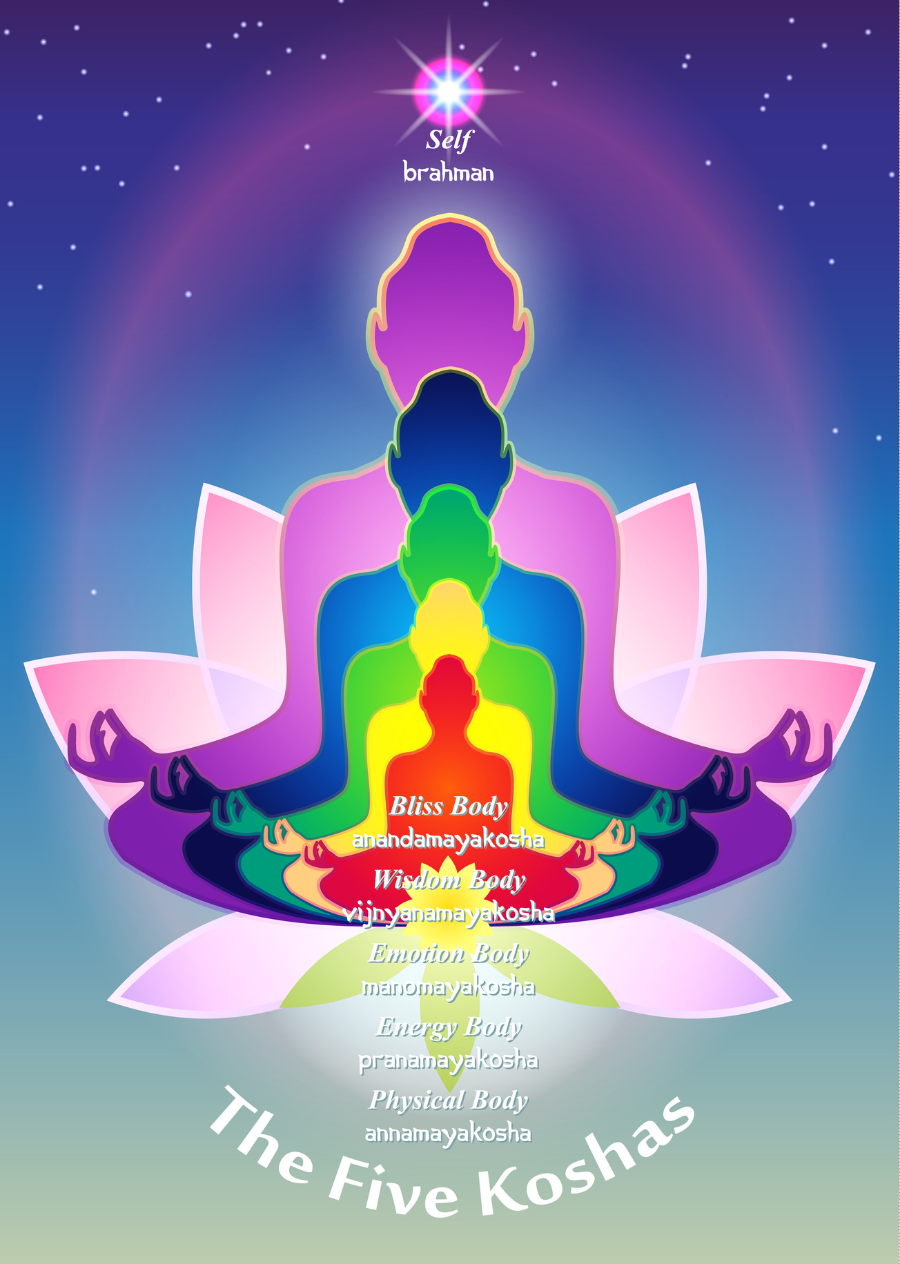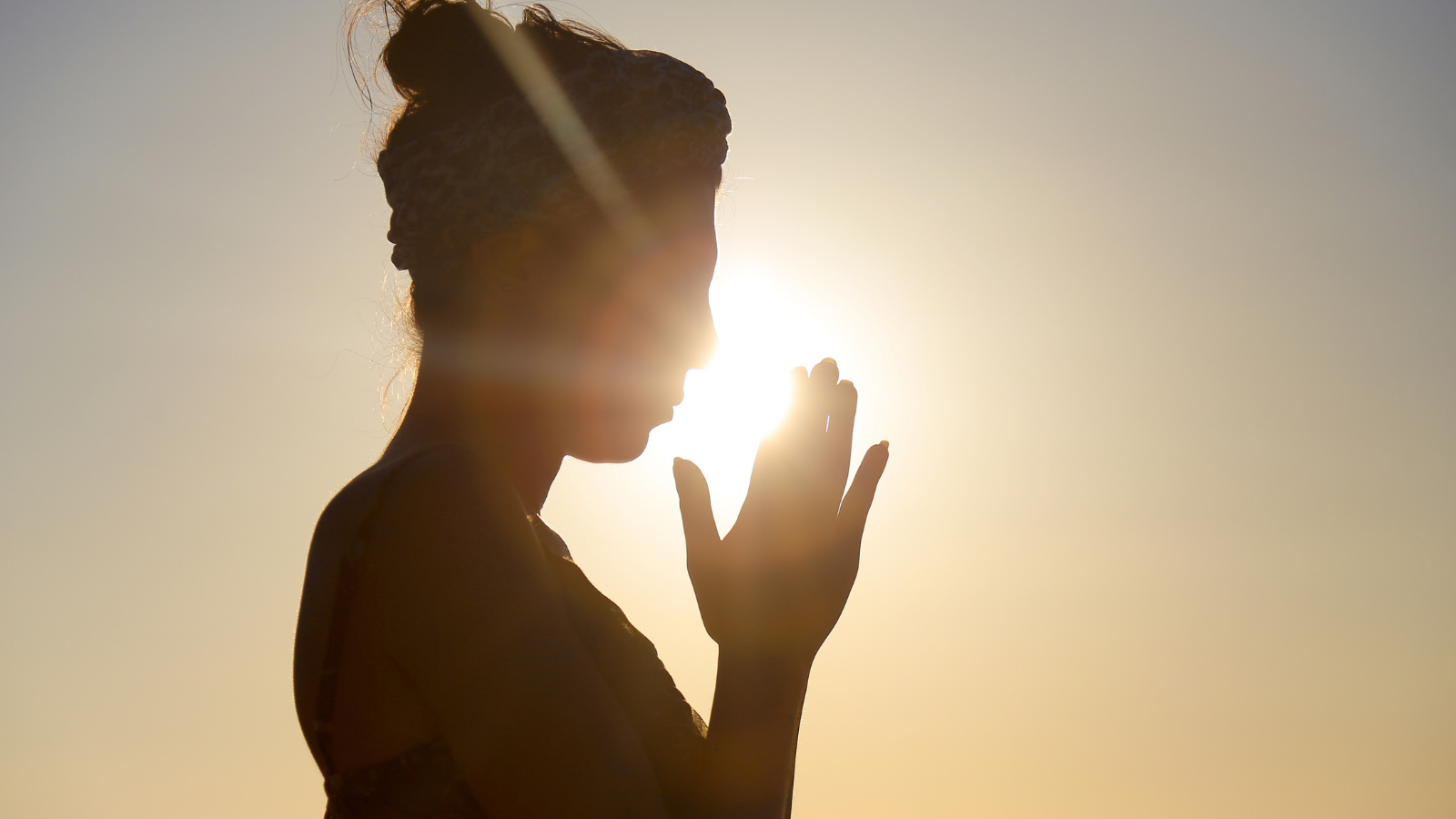View basket (0 items $0.00)

The Wise Self: Vijnanamaya Kosha
Vijnanamaya kosha is the part of us that lies beneath the thinking mind, the part that is aware of ourselves feeling our body. It includes the ego, the substrate of personality and conditioning that generates thoughts, emotions, and intentions. As the core of our individual identity, the ego colors the lens through which we perceive sensation and experience. Then it weighs and assigns value to that experience and generates an impulse to take action that reflects our conditioning, beliefs, and nature. It shapes who we are and how we express ourselves in the world.
Vijnanamaya Kosha and the Metaphors that Mold Us
 Vijnanamaya kosha is the fourth of yoga’s five layers of being. Other koshas include annamaya kosha (the physical body), pranamaya kosha (the energy body), manomaya kosha (the emotional body), and anandamaya kosha (body of bliss). Vijnanamaya kosha includes cultural archetypes and metaphors that mold both body and behavior. Someone living a soldier archetype may have a rigid posture and charge through life, while a victim archetype results in collapsed posture and inability to stand up for yourself.
Vijnanamaya kosha is the fourth of yoga’s five layers of being. Other koshas include annamaya kosha (the physical body), pranamaya kosha (the energy body), manomaya kosha (the emotional body), and anandamaya kosha (body of bliss). Vijnanamaya kosha includes cultural archetypes and metaphors that mold both body and behavior. Someone living a soldier archetype may have a rigid posture and charge through life, while a victim archetype results in collapsed posture and inability to stand up for yourself.
The body is also a source of metaphors in our everyday language. We understand ourselves and the world through metaphor. Each part of the body metaphorically reflects characteristic aspects of being human and like archetypes. Body metaphors can shape us. For example, the feet reflect our foundation and how we move into the world. Compare the posture of someone who “steps up to the plate” with another who “puts their foot down.” Body metaphors and imagery can also be used as healing tools to transform movement patterns and shift pain behaviors. Research has shown that introduction of metaphors to alter pain behavior, including pain-related catastrophizing.
Ego Mind vs. Buddhi Mind
Ancient sages clearly understood the power of the mind to control physical and non-physical states and to influence healing. Underneath our conditioning lies Buddhi, wise, discerning consciousness that can transcend our egoic self by choosing to self-regulate, access inner resources and live by higher principles.
Buddhi, often referred to as “the Witness,” is key to developing nonjudgmental awareness of our conditioned patterns, and to transcend them by consistently choosing wiser and healthier ways of being. We can imagine ego sitting on one shoulder and Buddhi on the other, both whispering advice. When we feed this kosha with higher thoughts, meditation, and selfless service we are more likely to live a soul-infused life rather than an ego-infused life. Yogic practices can awaken cellular intelligence so we are able to access our deep inner wisdom.
How Vijnanamaya Kosha Can Transform Our Lives

We can consciously use the Buddhi mind to change unhelpful habits by building on our innate capacity for conditioning. First, we use compassionate witnessing to identify habits that arise during yoga practice or daily life. For example, Sharon, a student, noticed a tendency to hold her breath during practice. Second, we try to understand the genesis of the habits and their multidimensional effects. We may have intuitive flashes that uncover subconscious influences like when Sharon realized childhood admonitions to “hold your tongue” had triggered a lifetime of neck and jaw tension that restricted her breath. Finally, we make a choice to set intentions to transcend our conditioning by changing our perspective or committing to helpful practices. Sharon committed to cultivating self-compassion during yoga practice and during her daily life.
Buddhi makes vows to have patience or treat ourselves with kindness as we travel the wisdom path toward health and wellbeing. Commitments on the Vijnanamaya kosha level can have surprising physical effects. Leona, another student, suffered from severe fibromyalgia pain and reported that a consistent practice of forgiveness relieved her pain even more than her physical practice. When experiential anatomy practices stimulate awareness and self-knowledge on this level, often through intuition, healing dreams, or flashes of insight, we can repattern a lifetime of conditioning and significantly alter our sense of self and the way we express and act in the world.

 Leila Stuart BA, LLB, C-IAYT, is a Registered Massage Therapist (now retired) and has practiced and taught yoga for over 40 years. Leila developed and taught 14 years of The Anatomy of Yoga Therapy, an innovative Yoga Therapy training, focusing on experiential anatomy, alignment, breath, and movement repatterning, and embodiment of the deeper teachings of yoga as pathways to self-healing. With a deep love and intuitive knowledge of experiential anatomy, Leila specializes in transforming academic information into somatic intelligence and life-changing experience. She is an international teacher, online educator and conference presenter, and author of Pathways to A Centered Body with Donna Farhi. She lives near Vancouver, BC. www.leilastuart.com.
Leila Stuart BA, LLB, C-IAYT, is a Registered Massage Therapist (now retired) and has practiced and taught yoga for over 40 years. Leila developed and taught 14 years of The Anatomy of Yoga Therapy, an innovative Yoga Therapy training, focusing on experiential anatomy, alignment, breath, and movement repatterning, and embodiment of the deeper teachings of yoga as pathways to self-healing. With a deep love and intuitive knowledge of experiential anatomy, Leila specializes in transforming academic information into somatic intelligence and life-changing experience. She is an international teacher, online educator and conference presenter, and author of Pathways to A Centered Body with Donna Farhi. She lives near Vancouver, BC. www.leilastuart.com.
Featured Courses










